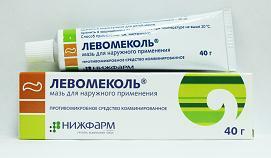Severe disease that affects the vital organs of man - it is a question of pulmonary hypertension. The pathological mechanism of this ailment consists in persistent increase of pressure in the bloodstream of the lungs, which has a menacing effect on the work of the heart.
The disease progresses over time, and the patient's condition gradually worsens, up to a lethal outcome in most cases. Let's see what it is - pulmonary hypertension 1 degree, 2, 3 and 4, than they differ from each other and what symptoms are accompanied.
Diagnostic criteria
Diagnosis is established based on a comprehensive examination of the patient , including using instrumental research methods.
But the fundamental diagnostic criterion for this disease is the value of pressure in the artery of the lung, which is measured by catheterization. It is on the basis of this indicator that you can establish an accurate diagnosis and determine the extent of the ailment:
| How is the | measured? The mean arterial pressure in the lung artery( in mmHg) is normal and at different degrees of the disease | ||||
| is OK | first degree | second degree | third degree | fourth degree | |
| Systolic resting pressure | 9-16 | 25-50 | 50-75 | 75-110 | above 110 |
In very severe cases, the pressure in the pulmonary artery can increase repeatedly - so much that its performance will exceed even blood pressure in a large circle of circulation.
Classification by stages
In clinical practice, it is customary to use the classification of pulmonary hypertension, which conditionally subdivides the course of the disease into 4 consecutive stage-degrees:
- 1st stage - transient .Symptoms occur only under adverse conditions( exorbitant physical activity, psycho-emotional overload, lack of oxygen, inflammatory processes in the lungs).Irreversible morphological changes in vital organs are practically absent.
- Stage 2 - stable. Symptoms occur even with moderate or household psychophysical load. Morphological changes in the form of a slight hypertrophy of the right heart ventricle can be compensated by medication.
-
Stage 3 - the characteristic symptoms of appear even with minor physical exertion and at rest, signs of circulatory failure appear.
Morphological changes of the heart( hypertrophy of the right ventricle) and lungs( atherosclerotic phenomena of the vascular bed) can be compensated only partially with the help of medical or surgical treatment.
- Stage 4 - irreversible morphological cardiopulmonary changes , pathology of the liver and digestive organs leading to death. The patient even in a state of rest suffers and suffers from the symptoms of the disease.

As
progresses Once it appears, hypertension is steadily progressing, involving not only the lungs, but the heart, and the liver of the patient in the pathological process. Partially compensate or slow down this process can only competent and timely medical assistance.
But the correct diagnosis is very difficult to put at an early stage, because shortness of breath and reduced performance are not expressed strongly and are easily explained by fatigue and general malaise.
According to the North American National Institutes of Health from the onset of the disease, an average of 2 years of takes place before the diagnosis is made. And during this time in the body there are a number of irreversible morphological changes that lead to severe damage to the blood vessels and the development of right ventricular heart failure:
- pathological process begins with the fact that the vessels of the lungs gradually narrowing due to the progressing atherosclerosis and their overgrowth with connective tissue;
- due to the fact that some blood vessels partially or completely lose their functions of blood-conductivity - their functions are taken by other venules and arterioles;
- , the amount of blood that falls on each vessel increases - the blood pressure in them begins to rise and grows as more and more new pulmonary vessels "fail";
- critical increase in blood pressure in the small circle of the blood circulation entails chronic overload of the right ventricle of the heart ;
- in order to cope with an unreasonably high load, the right ventricle of the heart is hypertrophied, that is, increases in volume - the patient has a so-called "pulmonary heart" that can be detected by radiography;
- gradually develops heart failure - the heart of the patient ceases to cope with its functions.
This video tells how the symptoms of the disease develop as it progresses:
If in the early reversible stages of a person's illness only worsening of well-being at physical exertion, subsequently in this patient can develop deadly complications:
- cardiac asthma;
- pulmonary hypertensive crises;
- pulmonary edema;
- chronic cardiac or pulmonary heart failure.
 Learn also about primary pulmonary hypertension - a dangerous and extremely rare form of the disease, affecting mainly young adults( 25-45 years).
Learn also about primary pulmonary hypertension - a dangerous and extremely rare form of the disease, affecting mainly young adults( 25-45 years).What is persistent pulmonary hypertension in newborns and how to detect it in time - everything is told here.
And how many people live with heart disease, you can read by clicking here.
Symptoms of
| Symptoms of | Symptoms of | Symptoms of | Symptoms of | |
| First | Second | Third | Fourth | |
| Dyspnea | With Exercise | with moderate stress and emotional stress, dyspnea with effort of | appears with a minor household load | severe dyspnea even at rest |
| Pain in the areachest and behind the sternum, which do not pass after taking nitroglycerin | insignificant | compressing and pressing | severe pains in the chest region of | are stronge pain in the heart |
| Tachycardia | 70-80 beats per minute | is directly related to the psychophysical load | sinus tachycardia according to ECG results | sinus tachycardia and arrhythmia by ECG results |
| Hypertrophy of the right ventricle of the heart | no | can be seen on the roentgenogram minor signs | wellvisible on roentgenogram | typical "pulmonary heart" |
| Dry cough | no | sometimes, after physical exertion | can be with traces of blood in sputum | strong, often with blood |
| Fatigue and poor performance | minor | moderate degree | markedly expressed | physical activity almost impossible |
| Dizziness and fainting | no | sometimes associated with physical and psychoemotional load | often | permanent |
| Cyanosis | no | cyanosis of the skinface and limbs | diffuse gray cyanosis | general |
| Voice voids | no | no | is | is |
| Edemas | no | rightthe | is constantly on its feet, can be around the neck | strong throughout the body |
| Change in the shape of the fingers by the type of "drumsticks" | no | to a small extent | noticeably | not only changes the shape of the fingers, but also the shape of the nails by the type of "watch glass» |
| Ascites - accumulation of fluid in the abdominal cavity | no | no | no | is |
| Digestive problems | no | no | no | pronounced dyspeptic phenomena |
Despite the fact that detect pulmonaryipertenziyu in the early stages is very difficult , avoid this terrible disease is still possible.
At the slightest complaints about uncharacteristic dyspnoea, fast fatigue and other symptoms of cardiopulmonary diseases - get competent advice from a pulmonologist or cardiologist.



